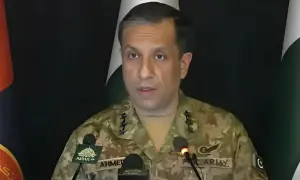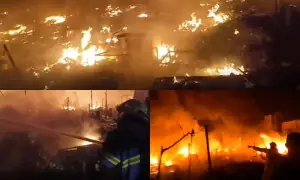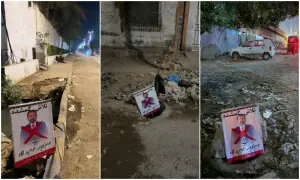Even in film have earthquakes been a Turkish horror theme
On February 6th, Turkey experienced its worst earthquake in decades: two massive shocks, measuring 7.8 and 7.5 on the Richter scale, jolted Southeastern Turkey and Northern Syria killing at least 50,000 and rendering tens of thousands homeless.
To say the disaster has left the country in mourning would be an understatement. There is outrage amongst Turkey’s citizens and its diasporic communities, as revelations pour out, painting a harrowing but all-too-familiar picture of filthy contractors, unregulated construction, and government insouciance. “I have never seen our people so angry,” wrote Orhan Pamuk, Turkish Nobel Prize Laureate for Literature, in a recent op-ed.
Adding insult to injury, the Turkish state tried to deflect the blame, initially calling it a natural disaster. But as the body count mounted, anger peaked, and guilty contractors went underground, the government reluctantly had to admit it had been slow to respond to this natural but long-in-the-making catastrophe.
Pictures meanwhile emerged of the pancake-collapsed buildings, heaps of rubble, miraculous survivors, and silently desperate chaos.

These images are eerily reminiscent of some of the scenes in Kucuk Kiyamet (A Little Doomsday), Yagmur and Durul Taylan’s 2006 psycho-horror drama. It tells the story of Bilge (Basak Köklükaya) who, as a child, lost her mother in the August 17, 1999 Izmit earthquake that killed more than 17,000 people.
Bilge, now a wife and mother of two, leads an affluent life with her family in Istanbul but a series of tremors rock her high-rise apartment and bring the trauma of the last earthquake to the fore.
As the family moves to a holiday resort in the southwestern town of Fethiye, Bilge’s repressed memories from moments spent under the rubble as a little girl resurface. We get glimpses from the point of view of a trapped Bilge stuck inside her collapsed house looking at shards of sunlight cutting through concrete caves that the earthquake had created.
A golden fish–a sweet childhood memory perhaps–turns into a nightmarish motif. The cracks in the wall symbolize death and destruction, in the past and the future. The film hints that Blige’s daughter, Eda, is ready to inherit her mother’s earthquake angst, like a family heirloom.
The film’s most arresting scene is a long pan towards the end as Bilge, along with her family, is trapped as their holiday home collapses in yet another earthquake.
As if in defiance of death itself, she doesn’t wait to be rescued, but pushes through a gap in the ceiling and out on top of the endless debris. But this tiny act of survival soon morphs into the background as a camera careens through revealing what the world has been watching in the perennial coverage of February’s earthquake: a sea of broken concrete, daring rescue workers, whimpering survivors, ending at an open pickup truck filling up with a harvest of human bodies.

Another Turkish film highlighting earthquake trauma was Mustafa Altioklar’s 2003 O şimdi asker (He’s in the army now). It features the well-known Turkish actor Mehmet Günsür as Nihat Denizer, a young man who, after losing his entire family in Kocaeli province during the 1998 earthquake, becomes a reclusive alcoholic struggling to get his life back on track.
In the aftermath of what’s now the second most disastrous earthquake in modern Turkey, the government, seriously short on emergency funds, shortened the duration of compulsory military service to just 28 days for a fee.
Nihat enlists in national service alongside a ragtag group of men in this military comedy. But soon, he is triggered by the thundering of moving tanks, a reminder of a certain terrifying groan from underground. He eventually breaks into the infirmary’s medical supplies to get his alcohol fix.
Turkish film buffs may remember the film for its comic moments but the cadet comedy is just a smokescreen for Nihat’s journey from a catastrophe that derails his life to the slow trek back to it.
In both Kucuk Kiyamet and O şimdii asker, Turkish filmmakers have zoomed inwards, blurring out the mind-numbing scale of the tragedy that typifies earthquake coverage. Using genre tropes of horror and comedy, these films have extracted humans out of faceless numbers in a dataset.
In Can Ulkay’s historical war drama Ayla: The Daughter Of War (2017), the 1998 Marmara earthquake in Istanbul jolts a Korean war veteran, Sergeant Süleyman (Ismail Hacioglu), out of his reverie and onto a soul-broadening mission he had put off for 50 years: to reunite with an abandoned Korean girl (Kim Seoul) he had rescued and cared for while on deployment near 38th parallel during the Korean war in 1950.
“I thought surviving war had made me invincible, but now (after living through the earthquake) I feel vulnerable again,” Suleyman tells his wife.
At this week’s Berlin Film Festival, the invitation to the opening ceremony made an appeal for donations towards the Turkish Earthquake relief efforts. Turkish people, understandably, are not concerned about movies at the moment.
Ahmet Boyacıoğlu, a film journalist for the Turkish newspaper Gazete Duvar, remarked, “They (the editors) say it’s not the proper time to write about films, festivals, parties. Newspapers don’t even have a culture page right now, everything is focused on the earthquake.”
But all this support, digital and real, will evanesce, a harsh reality most Turks who have experienced more than one major earthquake in their lifetime know well.
When the international community finds new causes to rally behind, when national rehabilitation efforts recede, when heartwarming survival and reunion stories make way for the prosaic woes of the newly homeless, the Turkish filmmakers will pen their scripts.
Ultimately, the Turkish fiction film will inherit the responsibility to take the lens away from a bird’s-eye view of slumped concrete monoliths and into the tiny pockets of air running deep inside the rubble, penetrating the souls lying within, immortalizing their trauma.
For the latest news, follow us on Twitter @Aaj_Urdu. We are also on Facebook, Instagram and YouTube.




















Comments are closed on this story.